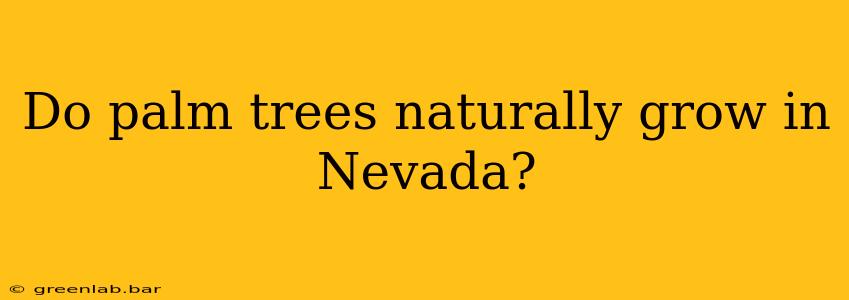Nevada, known for its vast deserts and striking mountain ranges, conjures images of arid landscapes and hardy plants. But can you find palm trees thriving naturally in this environment? The short answer is: no, not natively. While you'll see plenty of palm trees adorning Las Vegas boulevards and resort pools, these are almost entirely non-native species, carefully cultivated and maintained in an environment far from their natural habitat.
Understanding Nevada's Climate and Native Flora
To understand why palm trees don't naturally grow in Nevada, we need to examine the state's climate. Nevada's diverse geography encompasses several distinct ecoregions, but a common thread is aridity. Much of the state experiences extremely low rainfall, scorching summer temperatures, and significant temperature fluctuations between day and night. These harsh conditions are simply not conducive to the survival of most palm tree species, which generally thrive in warmer, more humid climates.
Nevada's native flora reflects this harsh environment. Instead of lush palm groves, you'll find plants exceptionally well-adapted to drought and heat. These include:
- Sagebrush: This iconic plant dominates much of Nevada's landscape, showcasing impressive resilience to arid conditions.
- Desert wildflowers: Many species bloom after infrequent rainfall, painting the desert with vibrant colors for short periods.
- Joshua trees: These unique yucca plants are a hallmark of the Mojave Desert, a region partly within Nevada.
- Various cacti and succulents: These water-storing plants are perfectly adapted to survive long periods without rainfall.
These plants, unlike palm trees, have evolved mechanisms to survive Nevada's extreme climate. They possess deep root systems to access scarce groundwater, thick leaves or stems to reduce water loss, and other adaptations that allow them to thrive where palm trees would perish.
Why You See Palm Trees in Nevada
So, if palm trees don't naturally grow in Nevada, why do we see them so prominently, especially in cities like Las Vegas? The answer is simple: human intervention. Palm trees, particularly those imported from tropical and subtropical regions, are aesthetically pleasing and are used extensively for landscaping. They provide shade and a touch of tropical beauty, creating a more inviting atmosphere in what is otherwise a harsh environment.
However, maintaining these non-native palm trees requires significant resources. This includes regular watering, fertilization, and pest control, making them a significant investment. They are not self-sustaining in Nevada's natural environment.
Conclusion: A Landscape Shaped by Climate and Human Choice
In conclusion, while palm trees are a common sight in Nevada's urban areas, they are not native to the state. The climate, characterized by low rainfall and extreme temperatures, is not suitable for the natural growth of most palm tree species. Their presence is entirely due to human cultivation and landscaping choices, highlighting the contrast between the state's native flora and its human-designed environment. Understanding this distinction provides valuable insight into the interplay of climate, ecology, and human impact on landscapes.

